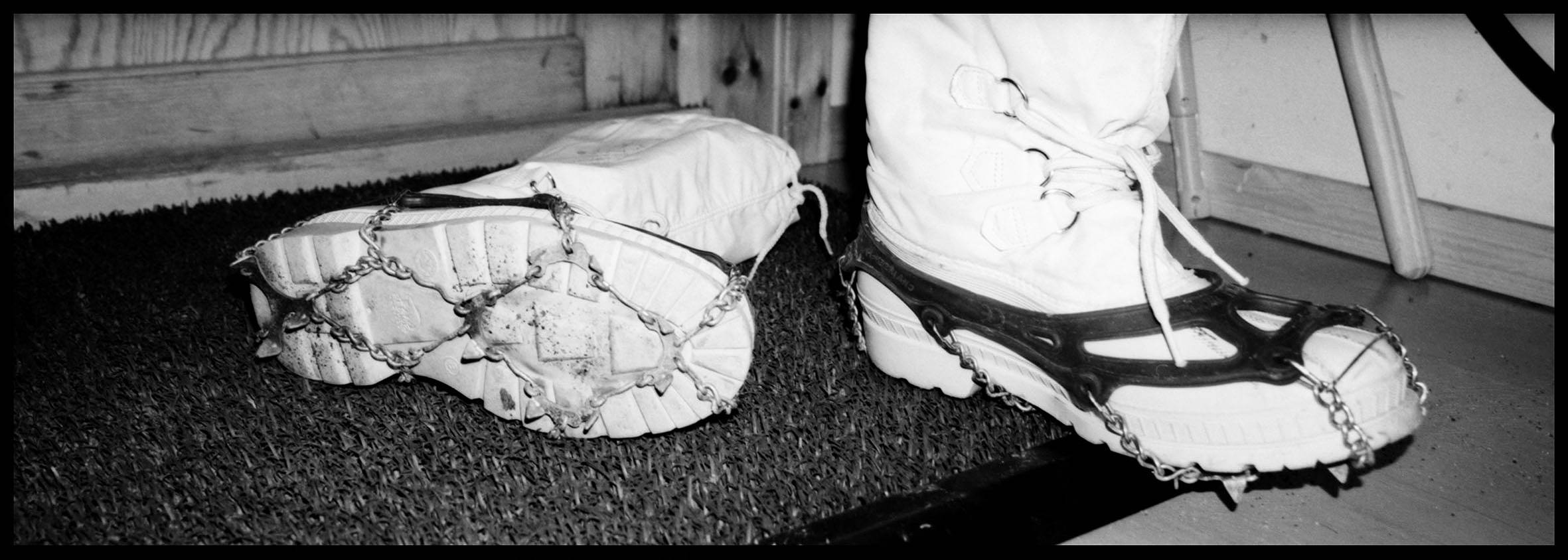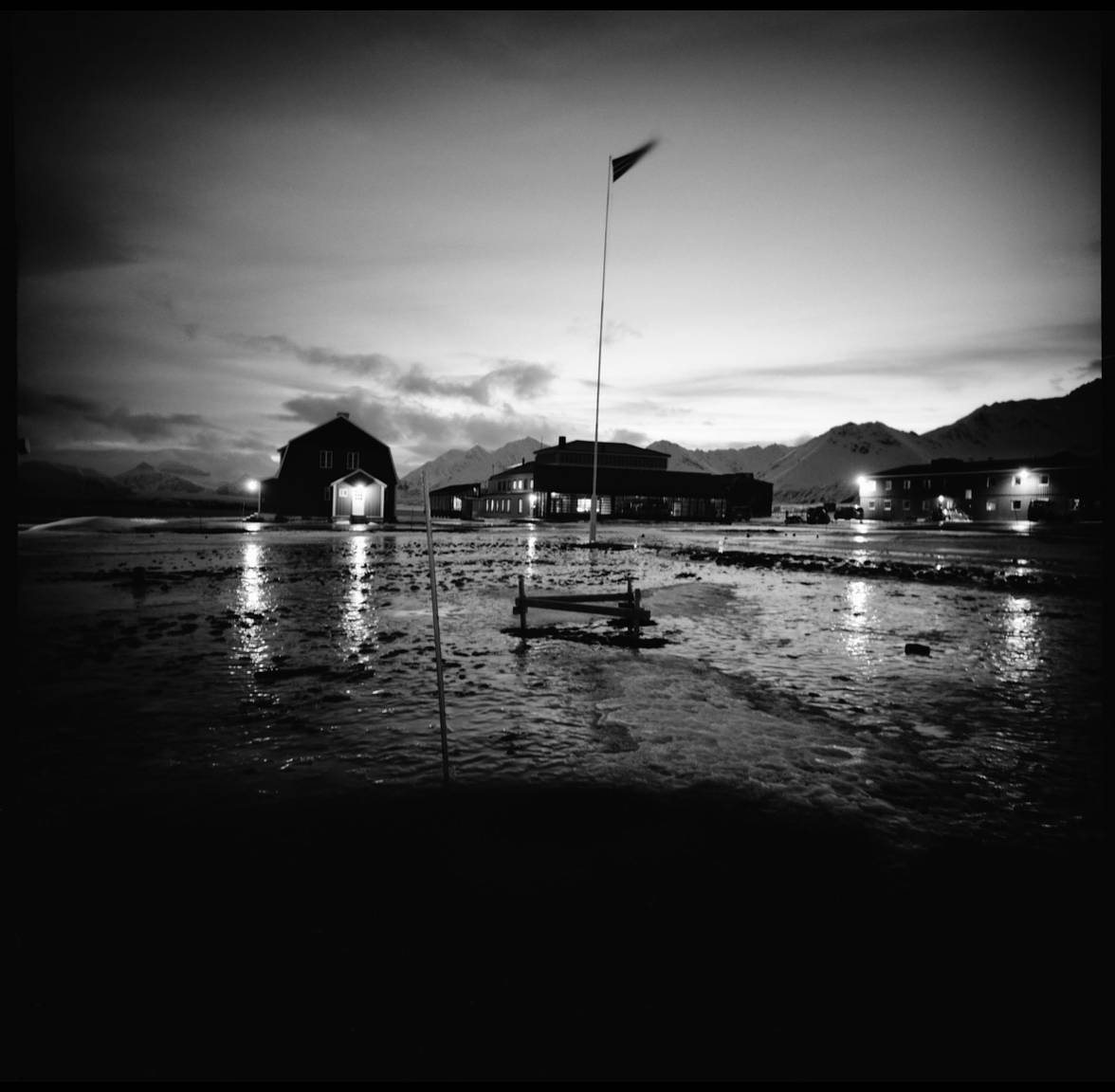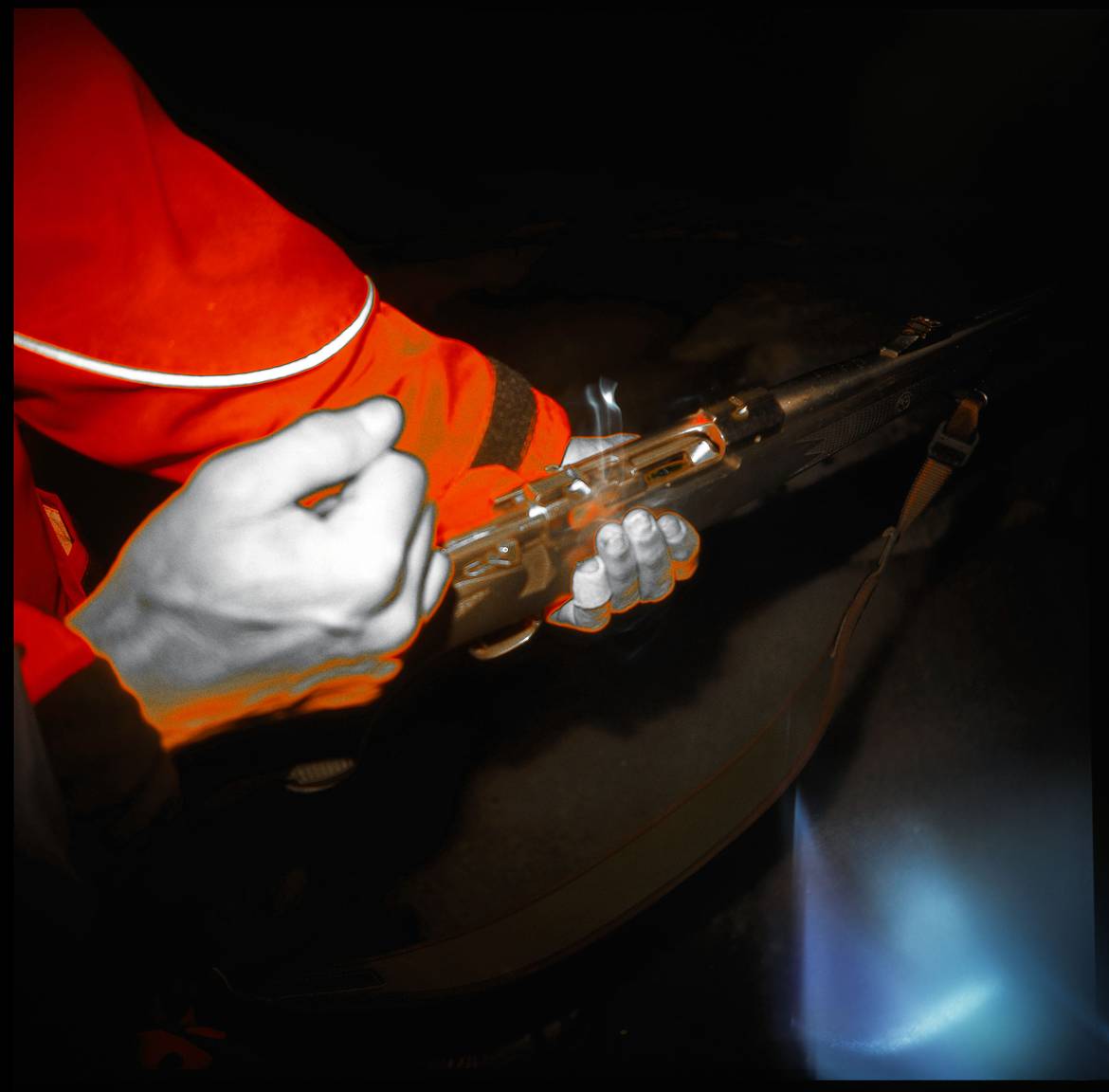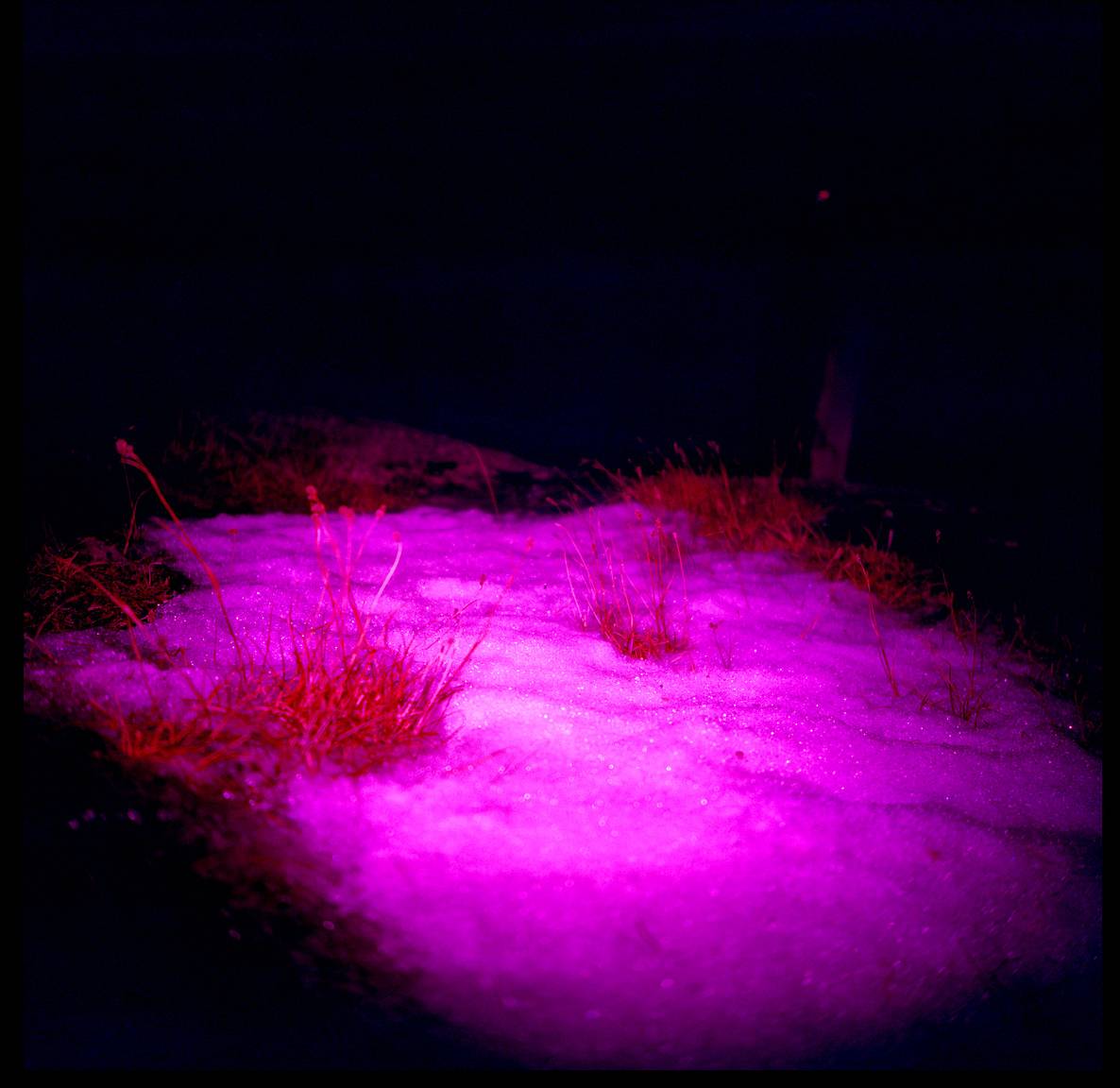The World According to Herr Willie - Outside the Polar Station of Ny Ålesund
12 17 Share TweetIt is maybe the closest you will come to the North Pole: the polar region around Ny Ålesund. It is on 79° degrees north, where polar bears play polo and I was farthest from civilization. A tale about 50 shades of ice.

My voyage to the polar station of Ny Ålesund was only secured a few days prior boarding the plane to the northern tip of earth and actually that was only possible, because it was winter time and the polar night dipped all of Svalbard into darkness. While the sun almost never sets during the summer, from end of October until March it actually never rises. In the summer Ny Ålesund is packed up with 120 international scientists and you have to book your flight from Svalbard’s biggest settlement Longyearbyen half a year in advance, because there are only two flights every week. In the winter time the crews in the research town get smaller and smaller and only a few engineers remain over Christmas and New Year.

For TV people like me, the lack of light is a real problem, if you want to paint with light and create stories that are visually strong. You just cannot take a sunbeam and light a whole mountain or a horizon. But because of that obvious challenge I was told I might have been the first ever journalist who visited Ny Ålesund during the polar night. We decided to shoot with a Sony FS7, which has an insane ISO boost, which eventually created an atmosphere of a constant blue hour on our footage. What we filmed was actually much brighter then reality. It was poetic and essentially the best kind of imagery for this place of ice. Honestly, in the summer it would have been much less dramatic, dust replacing ice.
The thoughts about light certainly influenced my photographic equipment, even more so as it was solely analogue. I am not a big fan of high ISO counts, therefore I knew I had to work with long exposure, flash and lighting. I had to reduce myself to three cameras, because I had a strict 20k weight limit on my inner arctic flight, 10 kilos already taken by our filming tripod.

I decided for the Hasselblad Xpan for panoramics. Compared to swing lens panoramic cameras I had indefinite long time exposure and could change lenses. The LC-A 120 is lovely because of its easy handling and great automatic exposure. I only brought a Gorillapod and I either put the camera on the Monkeypod or straight to the ground. It would have been a common sight of me laying on the ground, placing the camera on the ice and stabilizing it with my forehead. But the biggest disturbances were the strong cold wind and the missing light. I used a headlight to set basic apertures, but focused the frame more or less blindly. I am surprised, that I managed ok.

Because of the eternal polar night and the cold, the citizens of Ny Ålesund were only allowed to go two hours outside of the settlement. And only in company of an expert, who had been trained in various rescue methods. One of those is, how to fire a gun…on polar bears. The white predators are the true owner of Svalbard and sometimes come around Ny Ålesund to look for food. You should never interact with them, so they don’t get used to people. Polar bears are much faster than humans and most probably deadly if it comes to a little fistfight. In the summer you can easily avoid their paths, when you see the king of the arctic from afar. As it is dark in the winter, you will be too late to react once you see one. Therefore, better take a gun, this might save lives.
We stayed a whole week in Ny Ålesund including the weekend. As for most jobs, all people of the most northern settlement enjoy their weekends, too. In the summer there are plenty of activities like canoeing, camping and hiking. The activities become fewer with the fading sunlight. So during winter most people stay insight. Not for me. On Saturday I tried to capture the buildings of the settlements. And on Sunday I was lucky enough that René Bürgi, the ever helping Swiss engineer of the German polar station AWIPEV agreed on being my armed guide to conquer the eternal ice. He took me around a remote permafrost site, which was the highlight of our shooting four days earlier. The ever frozen ground is to be found in the whole arctic from Russia via Svalbard and Greenland to Canada.

At some places it reaches down up to few thousand meters. Due to the ever ongoing melting and freezing processes the top soil layer is mostly consisting of little hills. What I found very striking was the landscape of Svalbard. Glaciers and snowy mountains Underneath the ice is moss, little ferns and little polar flowers, sealed like Snow White in a glass coffin. Sometimes little plants find their way through the snow. There is plenty of life that survives in the cold.

A digging hole with the adventurous name Mr.Moustache sends automatically the exact temperature at different depths via the internet to Germany. Scientists from all over the world analyze this data, because the permafrost is one essential element in the climate change. The frozen ground binds hundreds of millions of climate gases such as methane. If the soil releases the gas it might jumpstart an even more dramatic greenhouse effect. Therefore it is vital to understand, how the Permafrost is working and how we can keep the gas under lock. While the scientists are very careful with the area, the local animals not so much. There are reindeers, that scratch their antlers at man-made poles or boxes with instruments. One time a reindeer got stuck in a antenna pole and dragged with it for a few weeks, before an engineer freed it. There are polar foxes and huskys, that are kept by the people of the settlement. On my last night in Ny Ålesund I had the chance to witness the feeding of the polar dogs.
Ny Ålesund is a great place to observe climate change. It is free od most signs of civilization, congestions, polution or heat production of people and industry. Yet, it showns clear signs of global warming. I talked to a few engineers, who come and go to Svalbard over the past 15 years. In the end of the last century, the fiord was frozen, this didn’t happen in the past winters. And the Permafrost is starting to melt. The periods of melting and freezing become longer and less reliable. Some fundaments of houses already dropped a few meters. The scientists in Ny Ålesund are studying these changes. We need to understand these processes better, to avoid to slip into climate chaos.
Fifty shades of ice: I have never seen more varying formations of frozen water in my life. There are all kinds of ice-structures: Frozen snow, slippery mirror even ice and crystals of rainwater in lines and drops. On our hike outside the settlement I tried to illuminate some of the ice with headlights to create a special atmosphere. For walking you most definitely need spikes underneath your boots, otherwise you slip like a mad man. But when you walk on snow you would have to watch out, not to lose your spikes in the deep snow.
One of the impressive sights of Ny Ålesund are between the improvised landing strip and the settlement. A huge Satellite Antenna, which is pointing automatically to various points in space. It’s worth a few millions and represents single-handedly the scientific purpose of Ny Ålesund. The antenna was also part of a dance movie, with artists dancing in the bowl of the antenna – would love to see that film. On my last morning, I could come and photograph the antenna. But with the darkness around most of the shots pretty much look the same. In the cold I also forgot to change lenses. But hey, I might try to do it better next time I am around.
Normally the period you can walk and hike in the winter ought to be limited to two hours. This is due to the cold and also to the dangers of facing polar bears while hiking around in the wilderness. Actually it’s not that cold if you have thermal underwear and thermal jackets and pants. The gulf storm ends in the west of Svalbard and delivers slightly warmer temperatures too, than in the east of the island. But the wind can be very cold, so me as wimpy city boy wore also a face cap. The temperatures in November were from minus ten degrees celcius up to zero. The engineers, who control the measuring devices have to do their work in the harshest conditions if need be.
But one reason for the outdoor limit is also the lack of light sources. Take our case. Me and René are walking outside with charged headlights and you walk in the dark open. Our stay outside easily stretched over five hours, starting around noon. You really need the lights, because the ground is always changing, from ice to snow, rocks and maybe even metal from the mining period. The headlight of René faded after around 4 hours with no other light sources in the wilderness. We only had to rely on my light now, drama! So even if you have a walky talkie (phones are not allowed, because of the radio transmissions) you could never indicate a rescue mission were you are. So you better charge your lights when you head out in the open.
Before Ny Ålesund became a scientific settlement it was a mining town until a terrible accident put an end to it in the early sixties. But there are traces of this period all over in Ny Ålesund. Engineer Bürgi took me out to an old little train station in the middle of the vast ice. Here for decades the miners loaded and unloaded the coal, to bring it to the harbour.

Everything lays here, like it was just recently abandoned, which is amazing and eerie. There is a law, that everything from this time is a protected landmark. Rails and nails become part of the biggest outdoor museum of the world – did I mention, that it´s also the most northern one? Right!
The locomotive, that carried everything over the island also remains around the harbour. By now it is quite rusty and was quite a challenge to photograph in the darkness. I used partly the flash but also used my headlight to shine a light and also exposed the train as long as I could. I also set another headlight to give a little reflex. It was quite windy, so I wasn’t too sure, if the little Gorillapod would have been stable enough for the exposures.
If you might wonder: No, I didn’t see a polar bear. I have only seen them on the most interesting warning signs ever around the airport.
White bear on black ground. Some scientists have seen them from afar in the summer. But for the winter it maybe was better this way, I still needed my arm to write this story and it would have been a delicious treat to chew on for the white king.
Interesting sidekick: While I write these lines of frozen letters I am actually on my way to the north pole. As we all know, there is no real landmass, just water as white aggregate. My good friend Manuel runs a company for aviation adventures and one of his catalogue highlights is a flight to the North Pole and back within a day. A few days back he asked me, if I want to come along, and I didn’t hesitate a bit. Tomorrow I will wave the pole. Look for polar bears and I will tell this story another time. Manuel also helped me big time with this trip to Svalbard, so I cannot give him enough bows!!!
If you wanna catch a glimpse of what I did in the arctic, check out this video (In German)

Read more of Willie Schumann’s (@wil6ka) travel stories on The World According to Herr Willie.
written by wil6ka on 2016-07-05 #places #slide #winter #cold #light #trip #arctic #herr-willie #polar #north-pole #svalbard #the-world-according-to-herr-willie #polar-station #innovation-norway
































































12 Comments